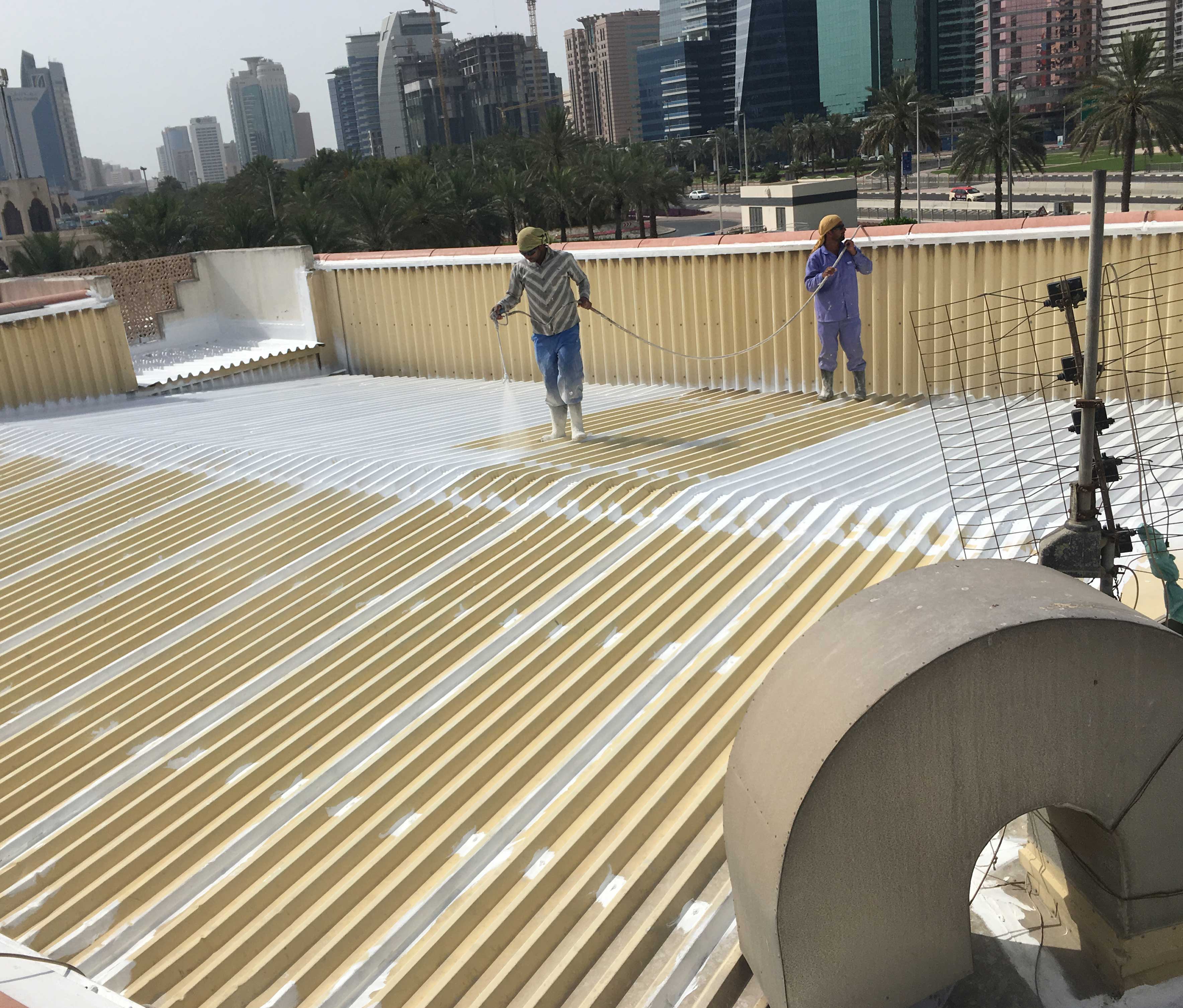Ware House & Metal Roofing & Thermal Insulation
MATRIX Bldg. Waterproofing Fixing L.L.C is the certified applicator of SURFACE COOL, which is Green Roof Waterproofing System; environmentally friendly protective coating will help reduce the urban heat island effect by lowering heat development and radiation from the roof
SurfaceCool is the developer and supplier of the latest evolution of Insulative waterproofing ceramic coatings. These Green elastomeric and breathable membranes helps in energy saving, protect the building from water migration, and comply with environmental regulations. “COOL-ROOF” from SURFACE COOL FZC to Exposed Metal Roofing is ecofriendly with very low VOC(Volatile Organic Compounds) emissions (<0.1 gr/L), SRI (Solar Reflectance Index) of 111, completely free of heavy metals and fire resistant Class A.
The objective of Waterproofing is to resist the ingress of water under specified conditions possibly under pressure, humidity, water vapour or dampness.
Waterproofing is done to building structures; Substructure (Basement, Foundations etc.), Wet Areas (Bathrooms, Kitchens, Garbage rooms etc.)
Roofing (Open terraces, balconies etc.)

Water Proofing
URBAN HEAT ISLAND
Around half of the world’s human population lives in urban areas. In the near future it is expected that the global rate of urbanization will increase by 70% of the present world urban population by 2030, as urban agglomerations emerge and population migration from rural to urban/suburban areas continues. Thereby, it is not surprising that the negative impacts related to urbanization is an increasing concern capturing the attention of people worldwide.
Urbanization negatively impacts the environment mainly by the production of pollution, the modification of the physical and chemical properties of the atmosphere, and the covering of the soil surface. Considered to be a cumulative effect of all these impacts is the UHI, defined as the rise in temperature of any man-made area, resulting in a well-defined, distinct "warm island" among the "cool sea" represented by the lower temperature of the area’s nearby natural landscape. Though heat islands may form on any rural or urban area, and at any spatial scale, cities are favoured, since their surfaces are prone to release large quantities of heat. Nonetheless, the UHI negatively impacts not only residents of urban-related environs, but also humans and their associated ecosystems located far away from cities. In fact, UHIs have been indirectly related to climate change due to their contribution to the greenhouse effect, and therefore, to global warming.
Metal Sheet Roofs
Metal Roofs are extensively used in Commercial/Industrial Buildings, Airports etc..which are very affordable, Quick to Install and replace. The major problem with these roofs are corrosion and due to which water leakages happen and the complexity of machines and other inserts especially air conditioners which are causes of the same.
Another key issue to this Roofing is that they absorb
We use Green environmentally friendly protective coating will help reduce the urban heat island effect by lowering heat development and radiation from the roof surface thus making the surrounding air cooler also, reducing the heat island effect will reduce air pollution.Diminishing the development of heat from irradiation on a roof with Cool-Roof is the key to saving energy and lowering cooling costs, as well as maintaining a better level of comfort indoors.
Waterproofing and breathability:
Cool-Roof blocks water migration when wet (moisture saturation) and breathes out trapped water vapor from the structure when is dry. This dynamic permeability is possible because of a design of solids and polymerization. This product comes as a single compound in 20-liter pails ready to be applied. Application must be done over a completely clean and stable substrate by airless sprayer or roller. Flat roofs require a total application of 700 microns DFT (3 coats). Sloped roofs require a total application of 300 microns DFT (2 coats). Make sure coat is dry and not tacky before applying the next coat.
Injection Treatment
Water leakage in Substructure is mainly due to concrete patch over a crack, tie-rod hole, or honeycombing in the foundation which allows water penetration. As these patches frequently detach themselves from the wall due to incorrect application, the absence of a good chemical bond, and / or the natural thermal cycling that occurs on the outside of the foundation, these patch repairs eventually fail.
Injection Treatment is the only solution which is done for the following
- Crack Repair in Concrete
- Filling cavities in masonry and concrete in case of water ingress
- Foundation pit sealing – curatin wall Injection treatment
- Sealing Hydraulic Engineering such as potable water tanks, oil tanks etc…
- Sealing of Anchor Head in special Civil Engineering
